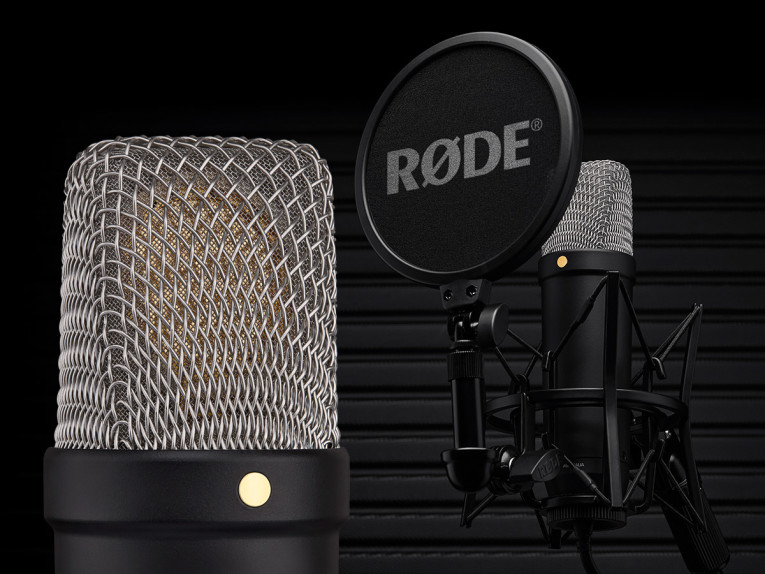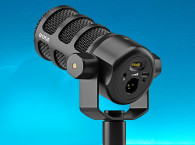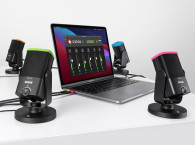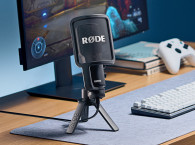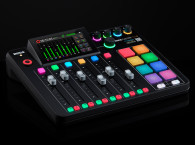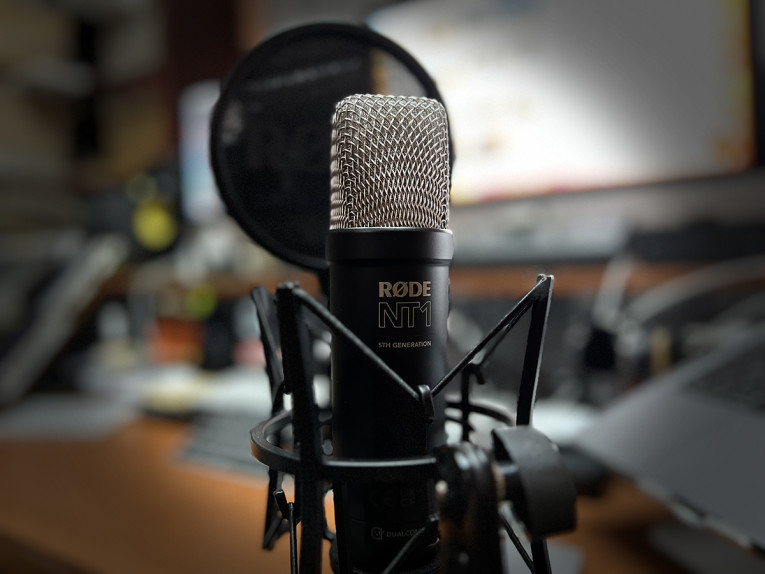
With over six million units sold, the Røde NT1 is a very popular studio microphone that boasts a legacy for the Australian company. Since its release more than 30 years ago, the microphone has gone through multiple transformations, including the legendary NT1-A and innovative fourth generation NT1, all of which remain in use and are highly appreciated. The Røde NT1 was the original product that kickstarted the company. Many studios who bought the first units still keep them as prized possessions - and more importably, Røde never stopped servicing those microphones.
An Australian Legend
I remember meeting Røde's CEO and founder Peter Freedman and later Colin Hill, the company's charismatic head of sales, short after they had started assembling and selling the NT2, which was the follow-up model for the original NT1, and the microphone that really conquered the recording community (together with the Classic, the tube-based large condenser that followed).
As the story goes, in the late 80's Peter Freedman imported large-diaphragm capsules - basically Neumann U87-inspired copies that were being made in China and that several manufacturers at the time were already using or testing. Seeing that those China-made microphones were about to flood the market, he decided to assemble a few microphones in Australia using improved components and a redesigned board. As Freedman already declared in multiple interviews, to their surprise, they managed to sell a few hundred units in Australia, encouraging them to explore international sales. Peter Freedman attended the NAMM Show for the first time in 1992 and found enormous interest for the microphones.
Of course, the fact that home recording was taking off is part of the reason for its stellar expansion. But importantly, the fact that Røde brought manufacturing and assembly to Australia, allowed it to offer a consistency that largely surpassed the Neumann-clones Made in China, with products that still costed much less than those from the small boutique manufacturers that existed in the US and Europe. Quality control, build quality and consistency are for the most part the reasons why the company managed to build a very successful business.
But that part of Rode's origins is a small episode compared with what the company would do later, when it decided to build a state-of-the-art factory to build the NT2000, the first large studio condenser that finally created a reference product able to rival the best classic microphones.
Before the home and project studio explosion, the market for large condenser microphones was small and premium products were expensive to make. Røde manufacturing investments allowed it to use the latest technology to produce larger quantities for a lower price, and never compromise on quality. In 1998, Røde moved into a new purpose-built 20,000sq ft factory and offices in Sydney, combining production, assembly, and logistics in one place. A separated dedicated metal-work facility was equipped with the latest computerized machinery to produce the microphone bodies and associated parts to the highest standards.
That's how the NT2000 microphone was manufactured and helped Røde send a strong message that it was intent on leading the microphone business globally. Of course, it was with a different product, appearing short after in the video category, that the company evolved into the leading technology force that it is today. But the most important aspect is that Røde never stopped investing in R&D, from studio ribbon, to content creation microphones, from wireless microphones to the very first smart USB-powered microphones, the company invested in more innovations than the rest of the microphone industry combined - or so it seems.

5th Generation
The fact that the NT1 5th Generation is again the most significant evolution yet for Røde is simply remarkable. And as always, the company makes sure everyone has the chance to try out and review its products before they are launched. I received my own package containing the NT1 5th Generation in late January and I've been using it daily for multiple tasks since then: from live streaming to recording. I could confirm how the package included everything needed, including a studio-grade shock mount and pop filter, plus XLR and USB cables. The stunning aluminum microphone body is available in black or silver and Røde adjusts the contents of the package to match. The black finish microphone I received comes with an amazing bright red XLR to XLR microphone cable.
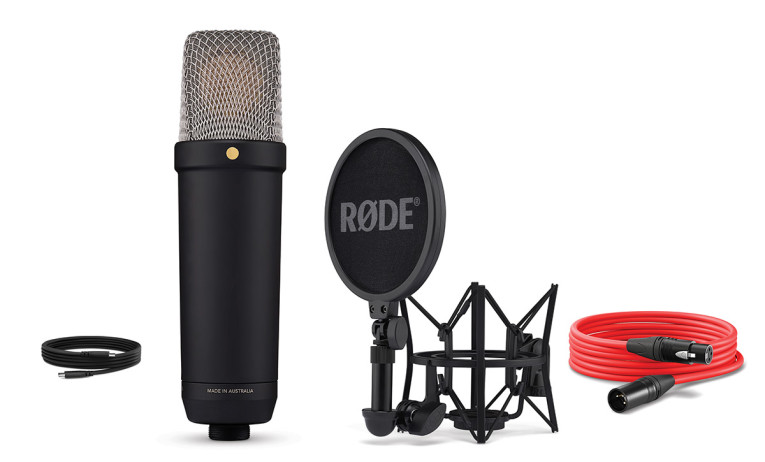
Since I didn't have the opportunity to make side by side comparisons with other high-quality cardioid condenser microphones - which I'm certain many reviewers will do - I will not spend time trying the describe the "iconic sound quality" or the "world-class performance" - which is already recognized from previous generations.
What I will highlight is the fact the NT1 5th Generation is a product that deserves praise all on its own, given that it successfully combines all of the state-of-the-art technology that a microphone should have in 2023. And this includes Røde’s groundbreaking, patent-pending Dual Connect output offering both XLR and USB connectivity, making it the ultimate studio microphone.
The microphone's XLR connector includes a USB-C port inside that easily allows plugging the supplied flat USB-C to USB-C cable - which like all supplied accessories is of excellent quality. I was impressed by the way the three XLR pins actually help guide the USB-C connector - and since USB-C is reversible, everything is as simple as it gets. When opting to use it connected over USB, the NT1 5th Generation is a monster of a microphone that beats all the audio interfaces I had at hand to test against the 48V phantom-powered XLR analog output.

Using the USB-C interface provides a completely “unclippable” 32-bit float digital output, which also unlocks advanced digital signal processing, in the microphone itself. The control is made via software, but the processing is within the signal chain, which means no added latency from an external processing loop. Perfect for all the uses I tried, recording all sorts of sources, just directly connected to my MacBook Air. Gigantic headroom, absolutely no noise on any of the recordings, which is explained by specified equivalent noise of 4dBA (A-weighted), making it the world’s quietest studio condenser microphone.
The NT1 5th Generation uses an HF6 large-diaphragm (1-inch) gold-sputtered capsule (precision engineered to sub-micron tolerances, as Røde highlights), which provides high sensitivity and high SPL handling. I am certain no one will have problems finding the ideal response with this microphone, which sounds rich and full to me. It has a tight cardioid polar pattern that made all my applications incredibly use to maximize on voice-over, acoustic guitar, and piano.
The patent-pending Dual Connect output with both XLR and USB-C allows connectivity for use with audio interfaces, mixers and consoles, or direct plug-and-play recording with a computer. The 32-bit float digital output is combined with up to 192kHz analog-to-digital conversion for direct recording on any DAW (and Røde provides a configuration manual for all the most important DAWs).
After I managed to get the beta-versions of Røde Central and Røde Connect - Røde's free software tools - I was finally able to use the on-board DSP which includes advanced APHEX audio processing - a compressor, noise gate, two-step high-pass filter, and legendary Aural Exciter and Big Bottom effects. Everything I tried was effective and useful - great to have for home recording and as a mobile setup.
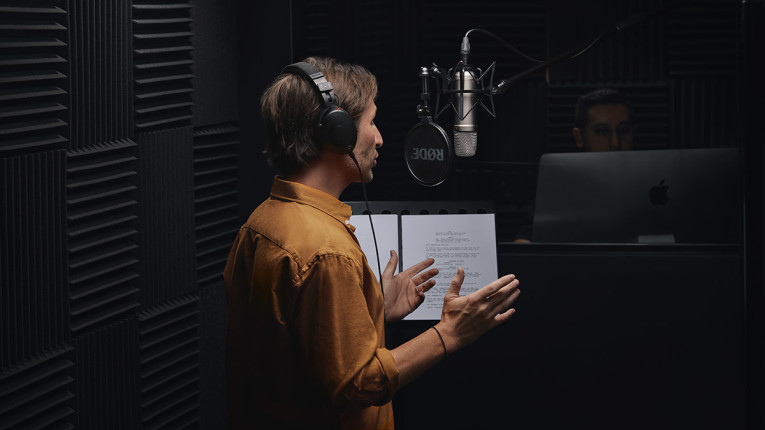
No Limits
"The NT1 is not only our flagship microphone, it’s an icon for today’s creative generation," says Røde CEO Damien Wilson. "Countless musicians, podcasters, streamers, broadcasters and content creators consider it their go-to microphone, and for good reason – it sounds incredible, is extremely flexible, and is built like a tank – a true studio workhorse. With this new generation, we wanted to preserve all of these qualities while incorporating innovations that have never been seen before in a microphone like this. The NT1 5th Generation is unlike any studio mic out there, but it hasn’t lost its charm and is sure to continue inspiring creators for decades to come."
I wrote before about the fact that I believe strongly in the future of USB microphones and Røde is the company that has been confirming that belief. For over 50 years, the XLR connector has remained virtually unchanged. Now, a USB-C connector is able to deliver so much more, and the 32-bit float output is simply outstanding to have on a relatively affordable product. It feels like a privilege considering that this level of technology was available only in very expensive professional recording devices, just a few years ago.
I used the analog output on the NT1 5th Generation connected to a home studio (Audient) EVO 4 USB interface (also powered by my laptop) and the results were outstanding. When switching to using the direct USB-C digital output on the microphone, it was like ultra-luxury. The audio fidelity was incredible no matter what I tried to throw out at the NT1. As Røde rightfully says, this is the world’s first microphone to feature a 32-bit float digital output, and anyone that will have the chance to record with it will immediately understand what that means. We can record the full dynamic range of the source and we can still adjust the recording on the DAW all we want. No more signal clipping. The ultimate sound capturing tool.
"The NT1 5th Generation redefines the meaning of plug-and-play," says Damien Wilson. "Since the beginning of audio recording, engineers have relied on the gain knob to capture clean audio – it’s always been the most important process in the recording workflow. The NT1 5th Generation changes that completely. When recording in 32-bit float, users can literally plug their microphone into their computer and start recording instantly without any risk of their audio being ruined by clipping or distortion."
The new Røde NT1 5th Generation is available for just $259 USD with a 10 year factory warranty after registration. Considering what is inside the package, it is probably one of the best microphone investments anyone can do. Given the fact that it can do anything and is so easy and convenient to use, it is going to make Røde a much bigger company.
www.rode.com
